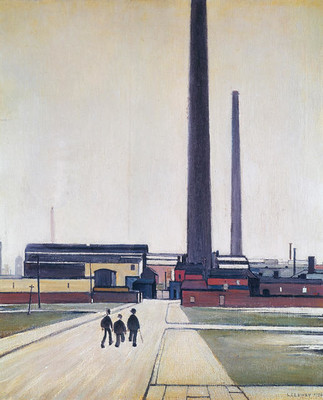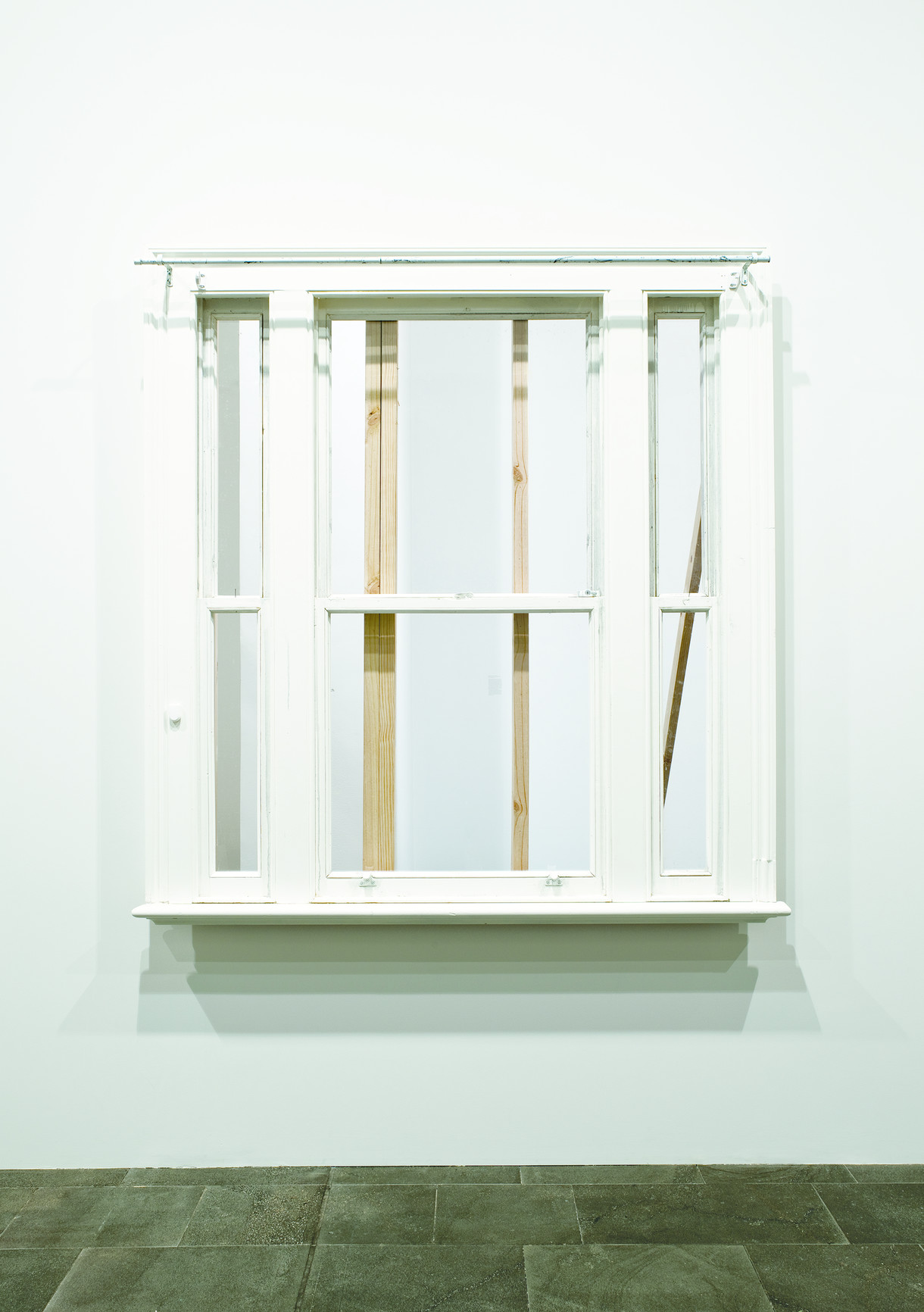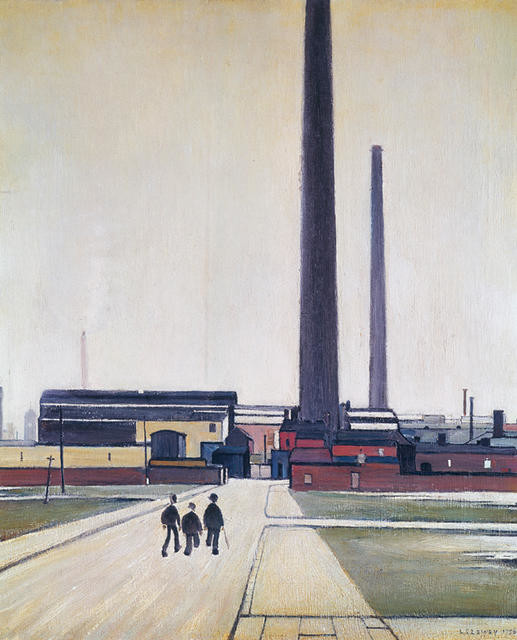B.
Factory in Widnes by L S Lowry
Collection
This article first appaeared as 'Up North' in The Press on 27 July 2012
British painter L S Lowry lived his entire life in the north of England and travelled rarely, so it's not surprising scenes in local industrial settings dominated his art. However, this artist has an ability to transform the sooty skies of Manchester and its surrounding districts. He conjures a distinctive, but tangible, charm and elegance from his potentially depressing subject matter.
Factory at Widnes shows three miniscule men on their way to work – factory managers, judging from their bowler hats and canes. They are dwarfed as they approach the gigantic chimney stack of the town's ICI chemical plant (identified from a 1960s photograph), their strangely comic character hinting at the likely tedium of the tasks of the day ahead. The painting is modern, memorable and it's one of my favourites in our collection; when it's on display, I'm drawn to its pared-backed, simple but impressive presence.
Lowry is best known for the crowds he painted, masses of people set against a background of gigantic smoking stacks of mills and factories, so the summary and abstract nature of Factory at Widnes is a little unusual. But it is also distinctly Lowry, as he highlights the alienation of a town described in the late 1880s as 'the dirtiest, ugliest and most depressing town in England.' In contrast to the generous public spaces of much of Georgian England in the south, the factories in this and other towns on the Mersey between Liverpool and Manchester in the north seem almost like giant cathedrals to industry.
When Factory at Widnes was made in 1956, Lowry was considered to be Britain's most famous living artist, so it seems remarkable that this painting was identified for Christchurch the year it was made. Our predecessor gallery's Picture Purchase Fund was tiny and the total number of works in the collection was then only 247.
But local architect and art connoisseur Heathcote Helmore was impressed by Lowry's work on a visit to London and arranged for it and one other to be included in the 1957 Canterbury Society of Arts annual exhibition. At 180 pounds sterling, it was the most expensive work for sale – but not by much. Others by New Zealand painters Sydney Lough Thompson, Austen Deans and Russell Clark were similarly priced. I have often thought ruefully of how much the art market has changed and how unlikely it is now that Christchurch could ever afford a similarly-important current work of art from the UK.
Jenny Harper


